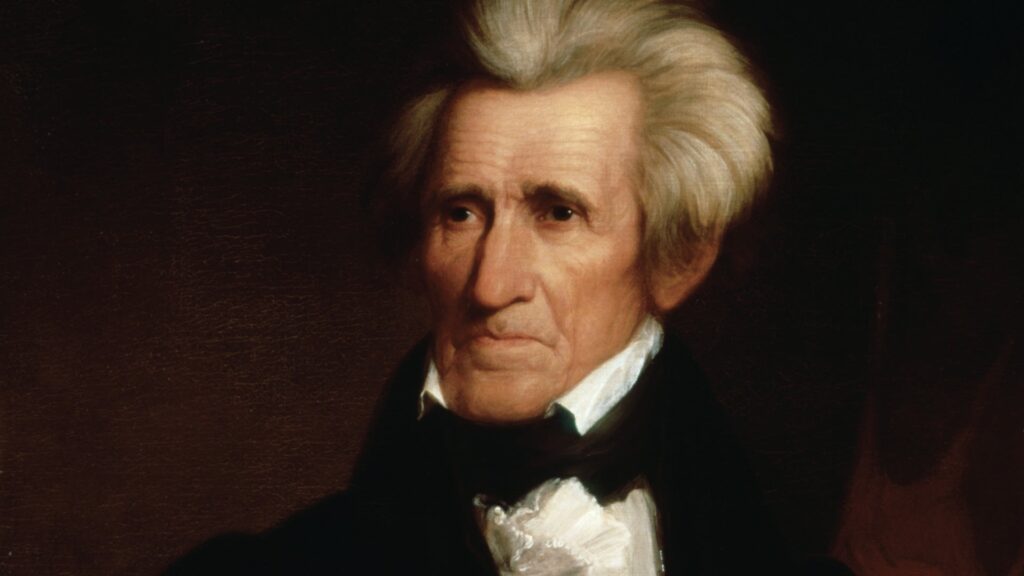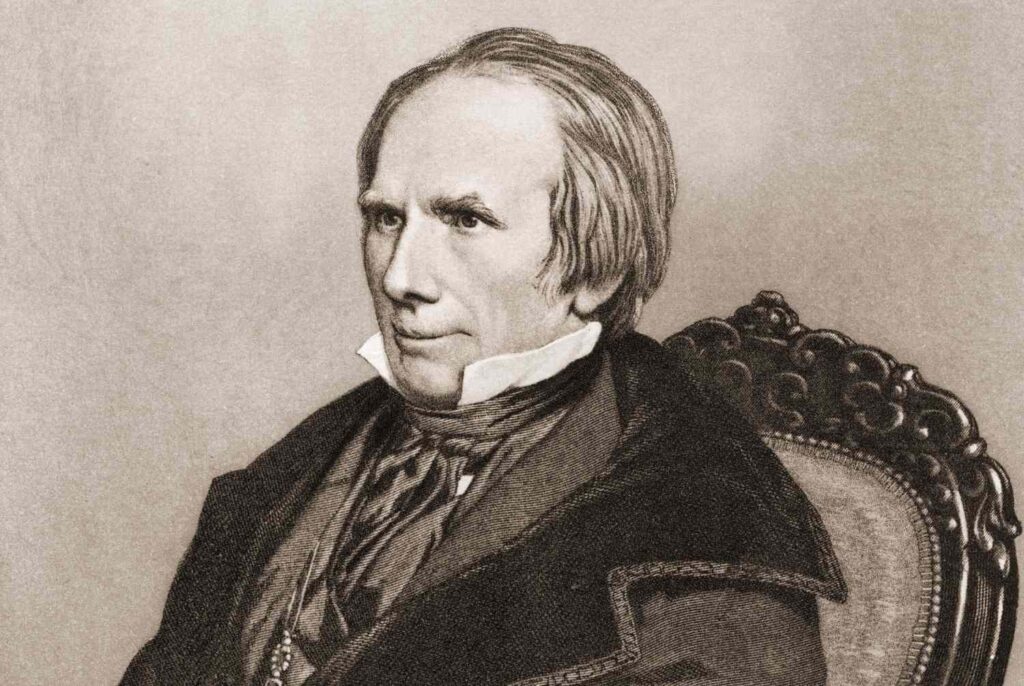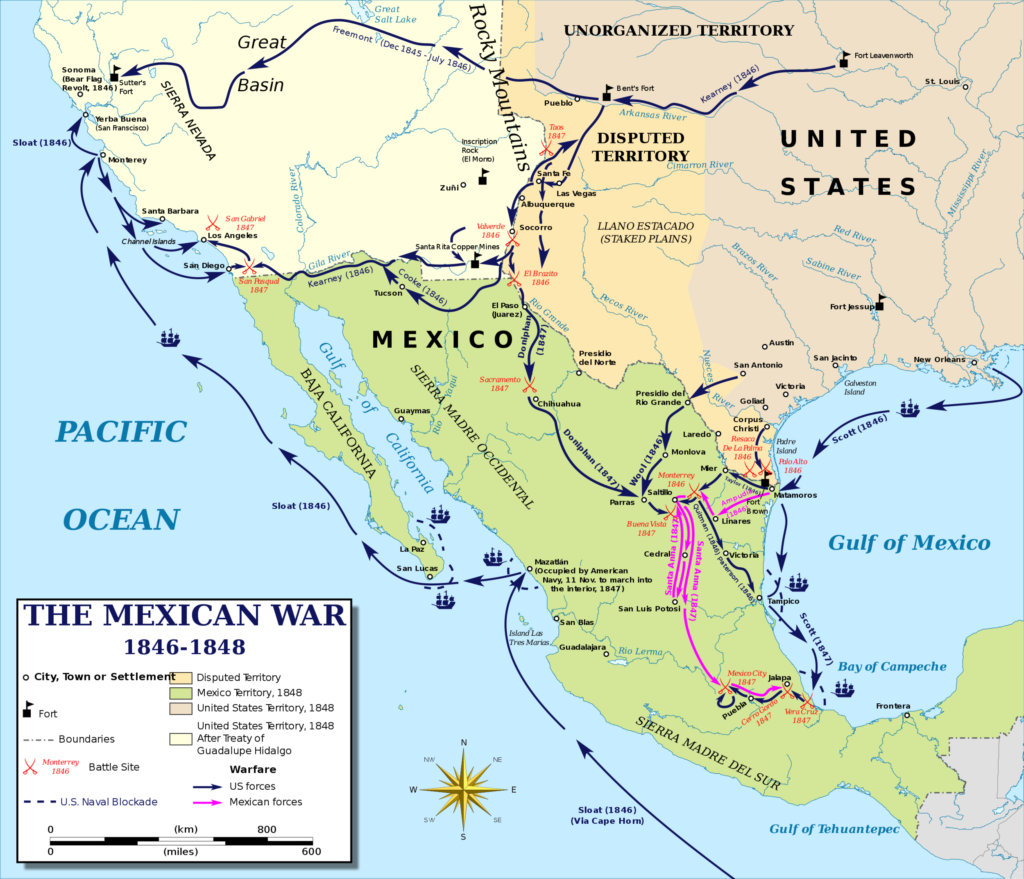James K. Polk
Born November 2, 1795 in Mecklenburg County North Carolina, the first of 10 children; he would spend a sickly childhood. Jane Knox Polk would impart her own strong beliefs to her son James, piety, individualism, hard work and an iron willed self-discipline. At age 17 he was diagnosed as having urinary stones; he would undergo a barbaric surgery (with little more than brandy for anesthetic) that more than likely left him sterile and perhaps impotent. His recovery allowed him to assume a more normal life as his health dramatically improved.
His father offered him any position in his companies that young James might desire, but young James wanted an education and proceeded to be an outstanding student, graduating with honors in June 1818. Continuing his education he would study under well known attorney Felix Grundy and be admitted to the Tennessee bar in June 1820.
His political career began the previous fall with his election to clerk of the Tennessee State Senate with Grundy’s endorsement September 20, 1819. He would become an advocate of Andrew Jackson’s political positions and gain the nickname of “Young Hickory”, a play on Jackson’s famous nickname of “Old Hickory”. So close were Jackson and his protégé that Jackson recommended James marry Sarah Childress, they would wed January 1, 1824.
With Jackson’s endorsement James Polk entered the cluttered world of Washington politics. He would claim his congressional seat in August 1825 and become embroiled in the political storm dominated by two giants, Andrew Jackson (Old Hickory) and Henry Clay (Prince Hal). He would witness the test of wills between these two men; it would temper and mold him. He would take the lessons he learned, he would use them to his advantage.


During his time in Congress he would be instrumental in sustaining President Jackson’s veto of the “Maysville Road”; tangle with Nicholas Biddle in what was known as the “Bank War” and be deeply embroiled in the “Nullification Crisis” of 1832-33. He advanced to chairman of the powerful “Ways and Means Committee” and finally “Speaker of the House”.
After 7 terms in the House with two terms as Speaker, he decided to return to Tennessee and run for governor. Narrowly elected he campaigned to be Van Buren’s vice president, but a Whig victory by William Henry Harrison left him on the outside. He turned his attention to governing where he suffered defeats for three of his programs; regulating state banks, improving education and internal infrastructure; seeing success only in electing to the US Senate two members of his party. Political defeats in 1841 and 1843 seemed to doom any further political advancement for James Knox Polk.
His political fortunes would change with the election of 1844. Statehood for The Republic of Texas and slavery would dominate the debate with many a voice being heard. It was into a crowded field studded with numerous well-known names; John C. Calhoun, James Buchanan, Richard M. Johnson, Martin Van Buren and Henry Clay that James Polk ventured.
It was from this swirl of heady names, by virtue of a compromise within his party James K. Polk would become the candidate of his party. President Tyler’s administration had begun the annexation of Texas, but it would fall to Polk to bring it to fruition. His strong advocacy for Texas statehood was clearly the impetus for his election and consequent inauguration March 4, 1845 as 11th President of the United States. He would pursue an ambitious political agenda:
- Reestablishment of an Independent Treasury ;
- Reduce and adjust tariffs;
- Acquire all or part of the Oregon Country from the British;
- Acquire as much as possible of California, but Alta California by all means.
His desire to expand the nation’s lands from the Atlantic to the Pacific (manifest destiny) would be the hallmark of his administration.
Note: The west coast of North America was claimed by four nations; the United States; Great Britain; Russia; with an independent Mexico pressing the Spanish claims. By the time American settlers were entering the “Oregon Country”, the northern extent of Mexican claims ended at the 42nd parallel (California) and Russian claims were north of the 54’ 40” line (Alaska).
The Anglo-American Convention of 1818 placed the northern border of US territories at the 49th parallel from the Continental Divide east to Lake of the Woods in present day Minnesota. The convention called for “Joint Occupation” of the Oregon Country, there the issue would lie until 1845 when Polk would push the issue with the British government with the final border following the 49th parallel to the coast allowing the British to retain Vancouver Island. Many in the US wanted to claim the entire Oregon Country all the way to Alaska (54-40 or Fight!) but negotiation carried the day with the final boundary designation as the 49th parallel. The “Oregon Treaty” was signed between the two nations June 15, 1846.
President Polk was immediately involved in the Texas annexation dispute. Driving this was Mexico’s reluctance to recognize the Rio Grande as the border of Texas, claiming the actual border was the Nueces River. The United States had previously accepted the Republic of Texas’ nine year old border claim and considered the Rio Grande the border of Texas.
Late fall 1845 Polk dispatched envoy John Slidell to negotiate a settlement with the Mexican authorities. Mexican authorities had treated foreign business interests badly, forcing the delivery of goods without payment and reneging on negotiated tariffs. He was to offer to settle all American claims plus a cash settlement for the territory of New Mexico, a part of California and acceptance of the Rio Grande as the border of Texas. Slidell arrived in Mexico City in December 1845 only to find a hard line stance by the Mexican government, a refusal of all offers and his credentials not accepted. Slidell reported to Polk that it was not possible to negotiate with the Mexican government. Faced with this situation, the newly elected president began to array military forces to confront Mexico.
In order to protect the border, President Polk dispatched Brigadier General Zachary Taylor and his Army to the disputed border. To further pressure the Mexican government and protect against aggression, he placed Commodore David Conner and his flotilla off the Mexican east coast. With the President’s signature Texas was annexed by the United States December 29, 1845 becoming the 28th state. Mexican officials promptly said it was tantamount to war.
President Polk’s success in lowering tariffs (the Walker Tariffs) in 1846 achieved one of his principal goals; congress would also pass the Independent Treasury Act of 1846 fulfilling the second part of his domestic agenda. He was also under tremendous pressure over the moral issue of annexing Mexican territory and the question of slavery in the newly acquired lands. Despite the moral implications the fire of “Manifest Destiny” had grabbed the American populace, the migration to the Oregon Country and California had begun in earnest.
April 25, 1846 Mexican military units skirmished with Americans (The Thornton Affair) on the north side of the Rio Grande killing several Americans persuaded Polk to seek a declaration of war with Mexico with this message to congress that Mexico had “shed American blood on American soil”. The House by a wide margin approved a declaration of war with the Senate voting 40-2 for the resolution.

Mexican military units began to cross the Rio Grande in force May 3rd, although badly outnumbered Taylor’s troops defeated the Mexican Army of the North in two pitched battles. Taylor’s use of his more mobile “light artillery” was credited with turning the odds on the superior numbers of Mexican troops. The Battles of Palo Alto May 8, and Resaca de la Palma May 9, resulted in defeats for the Mexican Army forcing them to withdraw back across the Rio Grande to Mexico.
With diplomacy yielding no results, the War Department ordered General Taylor to continue military operations in northern Mexico, capturing the city of Monterrey in a spirited battle, September 21-24, 1846, hoping the capture of a major city in Mexico would facilitate the sale of Mexican holdings in New Mexico and Alta California. Taylor would continue south, taking more territory and capturing and holding the city of Saltillo in the aftermath of the Battle of Buena Vista February 22-23, 1847. Most of Taylor’s troops would be transferred to Scott’s command after the battle; they would be part of Scott’s efforts to bring the Mexican government to the bargaining table.
To further pressure the Mexican government, June 30, 1846 President Polk ordered a newly appointed Brigadier General Stephan W. Kearny leading a force of about 2,500 men to Santa Fe, New Mexico and establish a territorial government. His force would capture the entire New Mexico Territory without firing a shot. September 22, 1846 he established a joint military -civilian government by appointing Charles Bent acting civil governor and Colonel Sterling Price as military governor under what became known as the “Kearny Code”. The Kearny Code would be the basis for New Mexico state law with many of the tenants still intact today.
Kearny would leave 800 men in Santa Fe under the command of Colonel Sterling Price to maintain order; dispatch some 800 under the command of Colonel Alexander Doniphan to capture El Paso on the Rio Grande then march his force south to join with General Wool’s command. Taking 300 men mounted on mules started for California to assume command of US forces in California under the command of Colonel John Fremont and Commodore Robert Stockton.
He would encounter Kit Carson on his way to Washington to deliver messages from Fremont. Kearny would forward the messages, send 200 of his men back to Santa Fe and order Carson to lead his party across the deserts of southern Arizona and California. His arrival in California would be anything but cordial. He was first surrounded by a force of Californio Lancers and defeated in the Battle of San Pasqual. Kit Carson managed to escape the cordoned Kearny’s position and bring help in the form of Commodore Stockton’s Marines and Sailors.

January 1847, the combined forces of General Kearny, Commodore Stockton and Colonel Fremont captured the city of Los Angeles. Although not authorized to do so on January 13th Fremont forged a cease fire and treaty with the Californios that was warily accepted by Kearny and Stockton. The “Treaty of Cahuenga” ended the war in California. Fremont would be named military governor of California by Commodore Stockton, as more US Army troops arrived Kearny became the overall commander of forces in California.
As overall commander he appointed his own military governor, demanded Fremont resign and accompany him back to Ft. Leavenworth. Restricted to barracks and ordered to stand court martial for insubordination and willfully disobeying a direct order. Fremont was judged guilty and ordered that he be Dishonorably Discharged; President Polk quickly commuted his sentence to service rendered, Fremont resigned his commission and returned to California.
Major General Winfield Scott would be ordered into the fray, he would place the city of Vera Cruz under siege for 20 days beginning March 9, 1847, and capitulation by the Mexicans came March 29th. Captain Robert E. Lee would urge the campaign to follow Hernan Cortes’ route in his conquest of Mexico in 1519. Mexican President and General Antonio Lopez de Santa Ana would challenge Scott’s troops at the Battle of Cerro Gordo. Overcoming tropical heat, torrential rains and terrain, Scott’s troops would flank the Mexicans strong positions and drive the Mexicans from the field April 18th, 1847.
April 13, 1847 President James K. Polk and his cabinet set out the negotiating stance for Nicholas Trist, a high level State Department staffer. The Texas border would the Rio Grande River to the point where it meets the territory of New Mexico then a straight line west to the Pacific; a transit right over the Isthmus of Tehuantepec; assume all American business monetary loss claims; and a sum of 15 million dollars, to be paid in 3 million dollar payments for 5 years. He was authorized to offer up to 30 million dollars providing certain measures were met.
Trist arrived in Vera Cruz May 6 promptly went about notifying Mexican authorities of his arrival instead of seeking out General Scott first. This breach of protocol irked Scott, but as time went on the two became friends. This friendship in turn irked the president who ordered Trist to return to the US. Trist ignored his orders and stayed in Mexico, instead he used some of his diplomatic contacts to stay abreast of the Mexican Assemblies actions.
Scott resumed his march west from Puebla August 7th; his troops would rout the Mexican Army in a two day fight, the “Battles of Contreras and Churubusco”. A cease fire after the two day battle would end September 6, 1847. The “Battle for Mexico City” September 8 – September 15 would end the following morning at 1 AM when the last of the Mexican Army was ordered to withdraw to Guadalupe Hidalgo.
Nicholas Trist’s decision to remain in Mexico in defiance of Polk’s orders would make his mark in history when he negotiated the “Treaty of Guadalupe Hidalgo” signed on February 2, 1848. President Polk was not entirely happy with the envoy or his efforts but reluctantly accepted the treaty to bring closure to the war. The Senate would ratify the treaty by a vote of 38-14 May 30, 1848 with an effective date of July 4, 1848.

The “Treaty of Guadalupe Hidalgo” ceded most of the states of New Mexico and Arizona, all present day California, Nevada, Utah and parts of Wyoming and Colorado. James K. Polk concluded the third largest land acquisition in the history of the United States. His expansionist agenda was accomplished; he had established an Independent Treasury of the United States and reformed the tariff structure benefitting US trade.
Polk’s “Independent Treasury” would exist until 1913 with the erection of the Federal Reserve. His revision of tariffs would allow the US government to operate; it was again 1913 when a federal income tax replaced tariffs as the revenue to run the government.
James K. Polk, 11th President of the United States acceded to the office March 4, 1845, he would leave the office March 4, 1849. After gaining so much for his country, he would not live to see the fruits of his labor. He died June 15, 1849.
WM (Walt) 2018